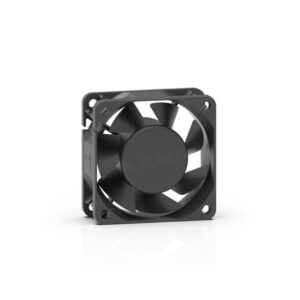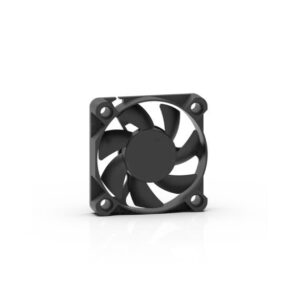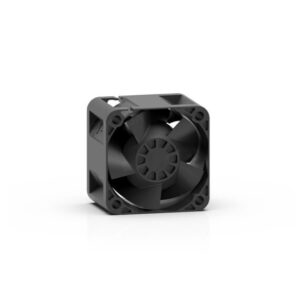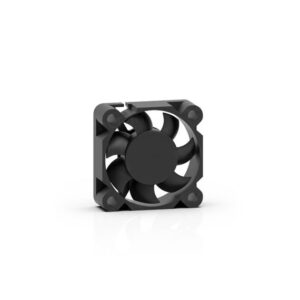Brushless Cooling DC Blower Fan 75x75x30mm
This 75x75x30mm DC blower fan offers versatile cooling. It’s available in 12V, 24V, and 48V models with ball or sleeve bearing options. Speeds range from 2000 to 3700 RPM, delivering airflows up to 14.46 CFM while keeping noise levels as low as 28.6 dBA. It’s a durable and adaptable cooling solution.
A Thorough Consider the Versatile 75x75x30mm DC Blower Fan .
In the world of contemporary electronic devices and machinery, reliable thermal administration is not simply a referral; it is a basic demand for integrity, efficiency, and longevity. As components end up being much more effective and small, the challenge of dissipating warmth ends up being increasingly complicated.
This 75x75x30mm brushless DC blower fan becomes a premier service, engineered to fulfill these requiring air conditioning challenges head-on. Integrating a portable form element with effective, high-pressure air movement, robust construction, and a wealth of sophisticated attributes, this fan is created for smooth assimilation into a varied range of applications, from cutting-edge consumer electronics to tough commercial tools.
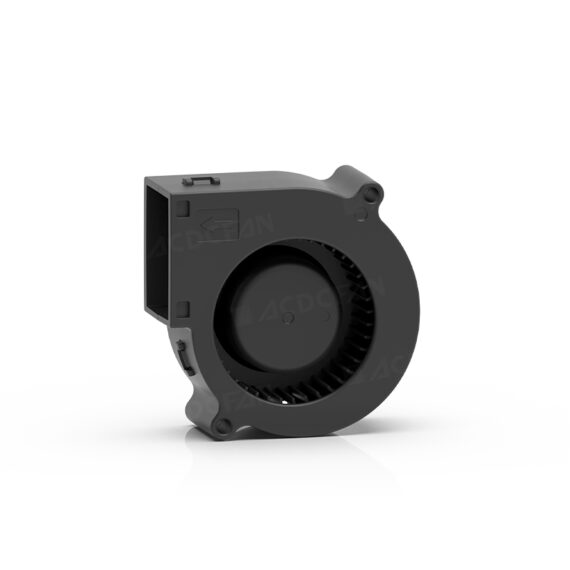
Core Style and Wind Resistant Efficiency .
At the heart of this DC blower fan’s effectiveness is its centrifugal, or blower-style, layout. Unlike axial fans that move air alongside the fan’s axis, a blower fan attracts air in through its central intake and eliminates it at a 90-degree angle with a concentrated electrical outlet. This style is inherently remarkable for creating high fixed pressure, which is the force required to relocate air through limiting areas, such as densely jam-packed server chassis, heatsinks with fine fins, or long, slim ducting.
The going along with air efficiency chart plainly shows this capacity. It plots fixed stress (gauged in mmH two O) versus airflow (measured in Cubic Feet per Min, or CFM) throughout 3 distinctive functional speeds: a peaceful 2000 RPM, a balanced 3000 RPM, and a high-performance 3700 RPM. This curve is critical for engineers, as it allows them to match the DC blower fan’s performance to their system’s specific resistance.
As an example, the high-speed 3700 RPM design can accomplish a maximum static stress of nearly 23.45 mmH two O, making it optimal for getting rid of substantial backpressure, while still supplying an optimum free-air airflow of 14.46 CFM. The reduced rate versions provide a compromise, providing quieter operation with lowered power intake, completely suited for applications where sound is a main problem and cooling needs are much less extreme.
Robust Construction and Product Excellence .
Longevity and integrity are crafted right into every aspect of this DC blower fan. Both the framework and the impeller are built from Thermoplastic PBT (Polybutylene Terephthalate), a high-performance engineering polymer renowned for its phenomenal mechanical strength, dimensional stability, and resistance to warm and chemical exposure. Most importantly, this material fulfills the UL 94V-0 flammability requirement. This is a top-tier security rating, indicating that the product will certainly self-extinguish within 10 secs after a flame is removed and will not create flaming drips, substantially lowering fire danger within an electronic room.
Additional improving its integrity is the choice of two distinct birthing systems:.
- Ball Bearing System: The costs choice for long life and durability. Sphere bearings provide a substantially longer functional life, rated for an outstanding 70,000 hours of constant usage at 40 ° C( equal to virtually 8 years). They likewise sustain a much bigger operating temperature variety, from a cold -30 ° C to a hot 70 ° C, making them the ideal selection for equipment operating in rough or uncontrolled environments. Their layout enables installing in any positioning without compromising efficiency or life expectancy.
- Sleeve Bearing System: A cost-effective and quieter option for less demanding applications. The sleeve bearing alternative supplies a respectable service life of 30,000 hours at 40 ° C( over 3.4 years of constant operation). With an operating temperature series of -10 ° C to 55 ° C, it is flawlessly suited for the majority of consumer electronic devices and workplace settings. Sleeve bearings do best when installed horizontally and are favored for their lower acoustic sound account.
This dual-bearing offering enables developers to select the perfect balance of price, durability, and ecological durability for their particular product demands. In spite of its durable construct, the DC blower fan continues to be lightweight at just 78.5 grams, lessening its effect on the total weight of the host system.
Electrical Versions and Performance Tiers .
To deal with a vast variety of power systems, this DC blower fan is readily available in multiple voltage and speed arrangements. The requirements table details an extensive family of models, ensuring an exact suitable for almost any demand.
- Voltage Options: The DC blower fan is readily available in standard 12V, 24V, and 48V DC variations, covering one of the most common power supplies located in consumer electronics, telecommunications equipment, and commercial control systems. Each voltage choice includes a charitable operating array (e.g., the 12V versions run from 6.0 V to 13.5 V) to ensure steady efficiency despite power supply variations.
- Performance Tiers: Within each voltage course, there are three distinctive speed degrees:.
- Reduced Rate (L): Operating at 2000 RPM, this rate focuses on low-noise procedure (a mere 28.6 dBA) and minimal power intake (0.72 W). It delivers up to 7.81 CFM and is perfect for items in noise-sensitive atmospheres.
- Tool Speed (M): At 3000 RPM, this tier uses a well balanced profile of solid performance and moderate acoustics. It provides a considerable air flow increase to 11.72 CFM and a fixed pressure of 15.41 mmH two O, making it a versatile workhorse for a wide range of applications.
- Broadband (H): Performing at a powerful 3700 RPM, this is the optimum performance tier. It is made for the most demanding thermal loads, pushing up to 14.46 CFM of air and creating a formidable 23.45 mmH two O of fixed stress to cool one of the most tough components.
Advanced Control and Keeping Track Of Functions .
Beyond its raw efficiency, this DC blower fan can be furnished with a suite of sophisticated features that make it possible for smart, responsive, and reputable cooling systems.
- Speed Up Control Settings: The fan supports numerous speed control techniques, with Pulse Size Inflection (PWM) being the most sophisticated. PWM control permits a motherboard or follower controller to precisely readjust the follower’s rate with a digital signal, allowing dynamic air conditioning that ramps up under lots and decreases when idle, optimizing both cooling efficiency and energy efficiency. Various other available alternatives consist of thermal control (TC), where an onboard thermistor automatically adjusts speed based on ambient temperature level, and straightforward voltage control (VC).
- Signal Outcome: For mission-critical systems, keeping an eye on DC blower fan standing is important. This DC blower fan can be configured with a Regularity Generator (FG) signal, which gives a tachometer output of the fan’s rotational speed. This allows the system to verify the follower is operating properly. In Addition, Turning Detector (RD) and Lock Detector (LD) signals can give a straightforward high/low alarm if the fan delays or falls short, allowing the system to set off notifies or closure procedures to prevent element damages.
- Motor Security: To guarantee a long and risk-free operational life, the fan’s electric motor is installed with several defense circuits. These include Reverse Polarity Protection (protects against damages if wired improperly), Over Voltage Defense (OVP), a Soft Begin (SS) feature to reduce inrush current, and a Vehicle Begin (AS) ability to make certain the fan can restart itself if delayed by a blockage.
By offering these adjustable digital features, the DC blower fan shifts from an easy component to a smart part of an integrated thermal administration method. This versatility makes it an important possession for designers producing sophisticated, automatic, and fault-tolerant digital systems.

